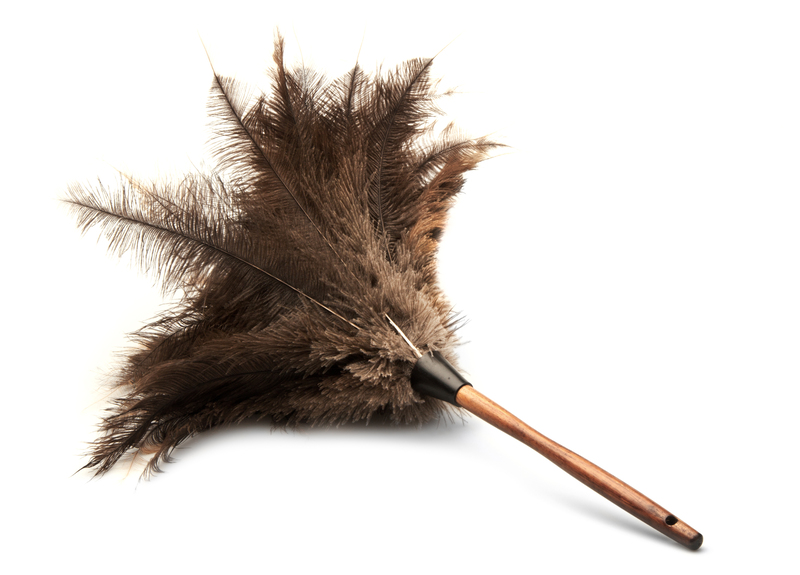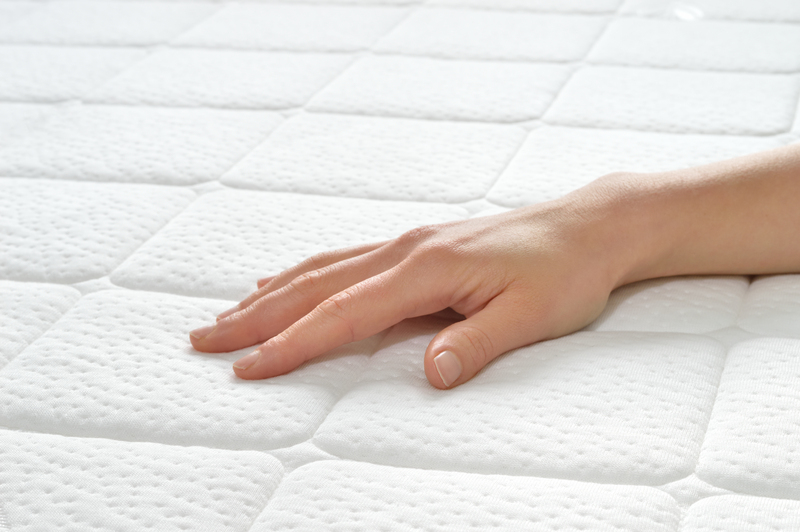Keep Your Curtains Fresh: Effective Cleaning Strategies
Posted on 14/08/2025
Keep Your Curtains Fresh: Effective Cleaning Strategies
Curtains are more than just decorative pieces for your windows--they play an essential role in filtering light, controlling room temperature, and protecting your privacy. However, they often get overlooked when it comes to household cleaning. Dust, pet hair, mold spores, and airborne pollutants can all accumulate on your drapes, impacting both the appearance of your home and your indoor air quality. Keeping your curtains fresh is a significant aspect of home hygiene that deserves as much attention as your carpets or upholstery. In this comprehensive guide, discover everything you need to know about effective curtain cleaning strategies that ensure your drapes remain vibrant, clean, and long-lasting.
Why Is It Important to Keep Curtains Fresh?
Keeping your window treatments clean doesn't just improve your home's aesthetic--it also promotes a healthier environment. Here are some compelling reasons why curtain freshness matters:
- Improved air quality: Curtains collect dust, pollen, and allergens, which can reduce indoor air quality.
- Enhanced longevity: Regular cleaning prevents fiber breakdown and fabric staining, extending the lifespan of your window dressings.
- Allergy reduction: Cleaner curtains mean fewer triggers for allergy sufferers.
- Odor elimination: Curtains can trap smells from cooking, pets, or cigarettes, leading to a stale-smelling room if not cleaned.
- Maintained appearance: Fresh, clean curtains uplift the entire look of a room, making it more inviting and comfortable.

How Often Should You Clean Your Curtains?
Establishing a regular curtain cleaning routine is vital, but the frequency depends on your environment and household needs. Here's a general guideline for keeping your curtains fresh year-round:
- Every 3-6 months: General curtain cleaning for areas with light dust and no pets.
- Monthly: In high-traffic rooms, homes with allergies, or where pets are present, more frequent cleaning is advisable.
- Spot cleaning as needed: Address stains, spills, or dirt marks as soon as possible to prevent permanent damage.
Pro Tip: Always check the care label for manufacturer recommendations before cleaning your curtains.
Understanding Curtain Fabrics: Cleaning Considerations
Not all curtains are created equal. The material of your window treatments greatly affects how you should approach curtain cleaning strategies. Here's a breakdown of popular fabric types and their cleaning needs:
- Cotton and linen: These natural fibers can shrink, so opt for gentle machine wash or hand wash. Always air dry to avoid heat damage.
- Polyester and synthetics: Generally machine washable and more durable against agitating cleaning cycles.
- Silk and velvet: Require delicate handling and often need professional dry cleaning to avoid water stains or fabric damage.
- Sheers and lace: Best washed by hand or using a mesh bag on a gentle washing machine cycle.
Effective Curtain Cleaning Methods
There's no one-size-fits-all method for keeping your curtains fresh. Matching your cleaning technique with your curtain's fabric yields the best results. Below are the most reliable methods for a variety of curtain types:
1. Vacuuming Curtains
Vacuuming is a quick and efficient way to remove surface dust and dirt. Use your vacuum's brush attachment and gently go over the entire curtain, paying special attention to pleats, hems, and edges where debris can collect. For best results:
- Vacuum curtains weekly or biweekly as part of your regular cleaning routine.
- Work top to bottom to avoid redistributing dust.
- Ensure the vacuum's settings are adjusted for delicate fabrics.
Bonus Tip: For fragile or embroidered curtains, place a nylon stocking over the vacuum nozzle to prevent snags.
2. Machine Washing Curtains
If your curtains are machine washable, follow these simple steps to keep them fresh:
- Read and follow the care label instructions in detail.
- Remove hooks, rings, or other metal accessories before washing.
- Pre-treat stains with a mild stain remover.
- Use a gentle cycle and cold water to prevent fabric shrinking or color fading.
- Hang curtains to air dry to avoid wrinkles and preserve their shape.
3. Hand Washing Curtains
For delicate or hand-sewn curtains, hand washing is the safest cleaning method. To clean:
- Fill a bathtub or basin with cool water and a gentle detergent.
- Submerge the curtains and swish gently. Avoid twisting or wringing the fabric.
- Rinse thoroughly until all soap residue is gone.
- Gently press out excess water (do not wring) and hang to dry in a shaded area.
4. Steam Cleaning Curtains
Steam cleaning is another effective method for freshening up heavy drapes or curtains you'd prefer not to remove from their rods. It can sanitize fabrics while removing light soiling.
- Use a handheld or upright garment steamer, moving slowly from top to bottom.
- Test on a small, hidden corner first to check for colorfastness.
- Allow curtains to dry completely with good ventilation after steaming.
Note: Overly damp curtains or improper use can lead to water spots, especially on silk or velvet.
5. Dry Cleaning Curtains
Some fabrics, such as silk, brocade, or lined drapes, need professional attention. Here are the benefits:
- Guarantees safe cleaning without risk of shrinking or color bleeding.
- Removes stubborn stains and accumulated dust, leaving your curtains feeling refreshed and revitalized.
- Best option for thick, lined, or structured curtain panels.
Look for a reputable local dry cleaner with experience handling household textiles.
6. Spot Cleaning Curtains
For isolated marks or stains, spot cleaning provides targeted cleaning without the hassle of washing the entire curtain.
- Blot (do not rub) fresh stains with a clean, damp cloth.
- Apply a gentle, diluted detergent to the affected area and let sit for a few minutes.
- Rinse with another clean, damp cloth and pat dry.
Maintenance Tips for Keeping Curtains Fresh and Clean
- Rotate and air out: Periodically rotate your curtain panels so any fading or wear occurs evenly, and open windows to air out mustiness.
- Dust windowsills: Clean sills and frames before rehanging curtains to prevent immediate soiling.
- Use a lint roller: Particularly effective for velvet or heavy fabrics that attract pet hair and dust.
- Install blinds or sheers: Add a protective layer behind your main drapes to reduce direct dust or sun exposure.
- Spray fabric refreshers: Fabric sprays can help with odors, but always test first to ensure they won't stain or discolor the fabric.
Special Curtain Cleaning Considerations
Allergy-Friendly Curtain Care
If you or your family suffer from allergies, focus on hypoallergenic curtain cleaning practices. Wash curtains regularly at higher temperatures (if the fabric allows), and choose naturally dust-resistant fabrics like synthetics or blends. Replace heavy drapes with lighter, washable alternatives if allergies persist.
Pet Owner Tips for Curtain Freshness
Pet hair and dander quickly accumulate on fabrics. To keep your curtains looking and smelling fresh:
- Spot vacuum more frequently, especially at pet height.
- Consider anti-static fabric sprays to prevent hair from sticking.
- Bathe and groom pets regularly to minimize shedding indoors.
Mildew and Mold Prevention
Humidity is a primary cause of mold and mildew on curtains, particularly in kitchens, bathrooms, and basements. For mildew prevention:
- Use a dehumidifier in damp rooms.
- Opt for moisture-resistant curtain fabrics.
- Regularly inspect and wash curtains, especially after periods of rain or high humidity.
- Sunlight kills mold spores, so hang your curtains outside on sunny days when possible.
When Should You Replace Curtains?
Even with the best curtain maintenance strategies, natural wear and tear can't be avoided forever. Replace your curtains if:
- Stains are permanent and can't be removed.
- The fabric is thin, brittle, or fraying.
- Color has faded significantly or uniformly.
- Visible mold or mildew persists after cleaning.
Generally, curtains last 5-7 years, but quality cleaning can extend this timespan.

Quick Curtain Cleaning FAQ
-
Can I clean blackout curtains?
Yes, but always check manufacturer care instructions. Some blackout linings require hand washing or spot cleaning only. -
Are there natural cleaning solutions for curtains?
Mix a gentle solution of warm water and mild dish soap for everyday cleaning, or add a little white vinegar to combat odors and build-up. -
How do I remove wrinkles after hanging curtains?
Use a handheld steamer, a steam iron on a low setting (with a cloth over the curtain), or hang curtains in a steamed-up bathroom for a few hours.
Final Thoughts: The Secret to Ever-Fresh Curtains
Whether you have sheer panels, luxurious velvets, or practical blackout drapes, keeping curtains fresh is vital for a healthy, stylish home. By following these effective curtain cleaning strategies--from regular vacuuming and spot-cleaning to professional care when needed--you can preserve the beauty and function of your window treatments for years to come. Make curtain care a part of your routine, and you'll enjoy cleaner, brighter, and more inviting living spaces.
Remember: The key to curtain freshness is attention, consistency, and choosing the right methods for your fabric type and home needs. Happy cleaning!



